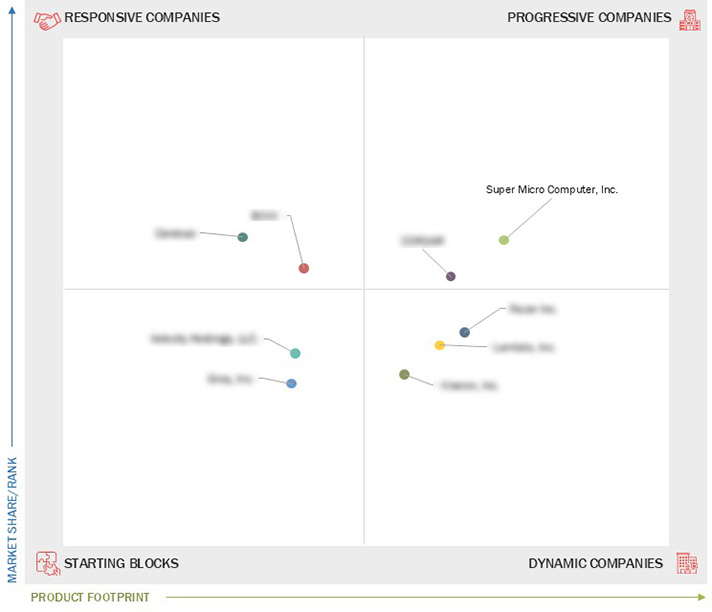Comparing 9 vendors in AI PC Startups across 0 criteria.
The AI PC market has rapidly evolved, driven by technological advancements and the integration of artificial intelligence into everyday computing. These AI-enabled personal computers are equipped with specialized hardware and software designed to seamlessly execute machine learning tasks and support generative AI models. As the demand for AI capabilities in personal and professional applications continues to grow, AI PCs are becoming indispensable tools across various sectors. Key drivers of the market include the overarching adoption of digital platforms that necessitate advanced computational resources and the expansion of gaming industries which require high-performance systems. Furthermore, the increasing integration of AI into IoT ecosystems and the commercial sector is accelerating the use of AI PCs, optimizing software for heavy AI workloads. However, the market faces challenges such as high costs associated with AI-optimized hardware and a shortage of qualified professionals.
Market Leadership Quadrant
1.1 Study Objectives
1.2 Market Definition
1.3 Study Scope
1.3.1 Markets Covered and Regional Scope
1.3.2 Inclusions and Exclusions
1.3.3 Years Considered
1.4 Currency Considered
1.5 Unit Considered
1.6 Limitations
1.7 Stakeholders
2.1 Introduction
2.2 Market Dynamics
2.2.1 Drivers
2.2.1.1 Adoption of digital platforms
2.2.1.2 Advancements in Genai and ML
2.2.1.3 Expanding gaming industry
2.2.1.4 Rise of Generative AI & productivity tools
2.2.2 Restraints
2.2.2.1 Shortage of qualified professionals
2.2.2.2 Requirement of specialized hardware components
2.2.2.3 Reliance on cloud-based services
2.2.3 Opportunities
2.2.3.1 Increasing adoption in commercial sector
2.2.3.2 Integration into IoT ecosystem
2.2.3.3 Increasing optimization of software for AI workloads
2.2.4 Challenges
2.2.4.1 High costs of AI-optimized hardware
2.2.4.2 Rapid shifting landscape of technology in AI industry
2.3 Trends/Disruptions Impacting Customer Business
2.4 Value Chain Analysis
2.5 Ecosystem Analysis
2.6 Investment and Funding Scenario
2.7 Technology Analysis
2.7.1 Key Technologies
2.7.2 Complementary Technologies
2.7.3 Adjacent Technologies
2.8 Patent Analysis
2.9 Trade Analysis
2.10 Porter’s Five Forces Analysis
2.10.1 Threat of New Entrants
2.10.2 Threat of Substitutes
2.10.3 Bargaining Power of Suppliers
2.10.4 Bargaining Power of Buyers
2.10.5 Intensity of Competitive Rivalry
3.1 Introduction
3.2 Key Player Strategies/Right to Win
3.3 Revenue Analysis
3.4 Market Share Analysis
3.5 Company Valuation and Financial Metrics
3.6 Brand/Product Comparison
3.7 Company Evaluation Matrix: Startups/SMEs
3.7.1 Progressive Companies
3.7.2 Responsive Companies
3.7.3 Dynamic Companies
3.7.4 Starting Blocks
3.7.5 Competitive Benchmarking: Startups/SMEs
3.7.5.1 Detailed list of key startups/SMEs
3.7.5.2 Competitive benchmarking of key startups/SMEs
3.8 Competitive Scenario
3.8.1 Product Launches
3.8.2 Deals
3.8.3 Expansions
3.8.4 Others Developments
4.1 Super Micro Computer, Inc.
4.1.1 Business overview
4.1.2 Products/Solutions/Services offered
4.1.3 Recent developments
4.2 CORSAIR
4.2.1 Business overview
4.2.2 Products/Solutions/Services offered
4.2.3 Recent developments
4.3 BOXX
4.3.1 Business overview
4.3.2 Products/Solutions/Services offered
4.3.3 Recent developments
4.4 Cerebras
4.4.1 Business overview
4.4.2 Products/Solutions/Services offered
4.4.3 Recent developments
4.5 Razer Inc.
4.5.1 Business overview
4.5.2 Products/Solutions/Services offered
4.5.3 Recent developments
4.6 Kneron, Inc.
4.6.1 Business overview
4.6.2 Products/Solutions/Services offered
4.6.3 Recent developments
4.7 Lambda, Inc.
4.7.1 Business overview
4.7.2 Products/Solutions/Services offered
4.7.3 Recent developments
4.8 Velocity Holdings, LLC.
4.8.1 Business overview
4.8.2 Products/Solutions/Services offered
4.8.3 Recent developments
4.9 Groq Inc.
4.9.1 Business overview
4.9.2 Products/Solutions/Services offered
4.9.3 Recent developments


 BOXX Insurance
BOXX Insurance
 Nov 2025
Nov 2025

